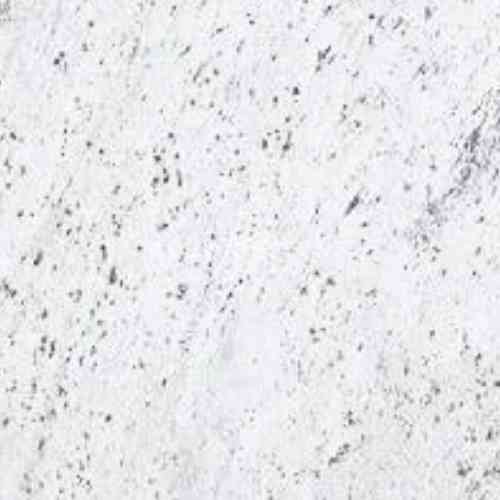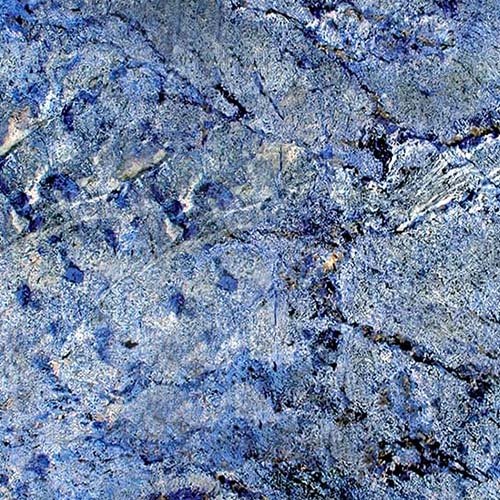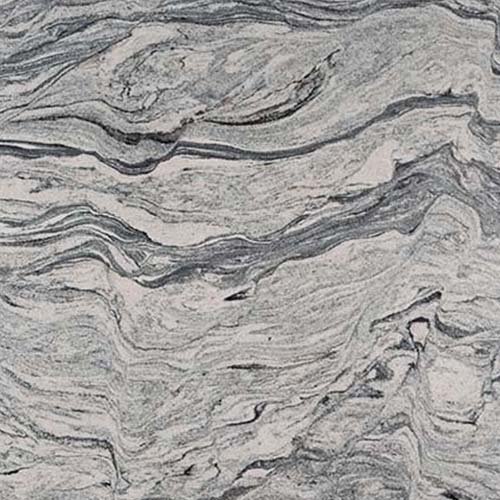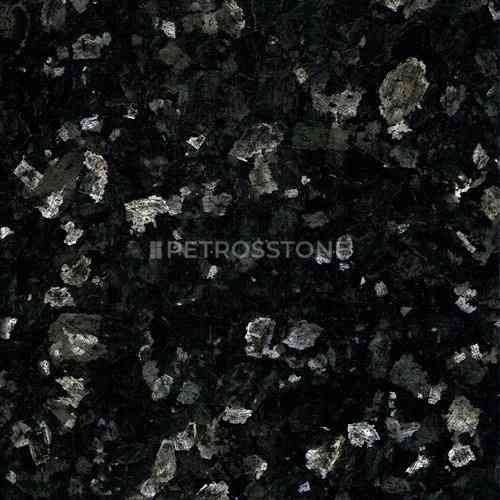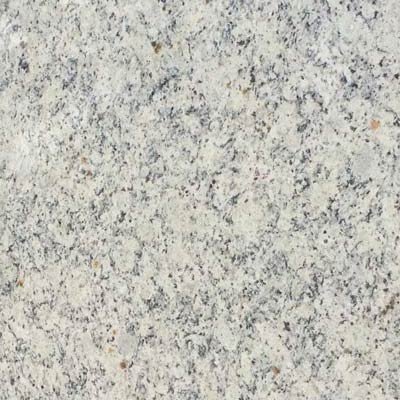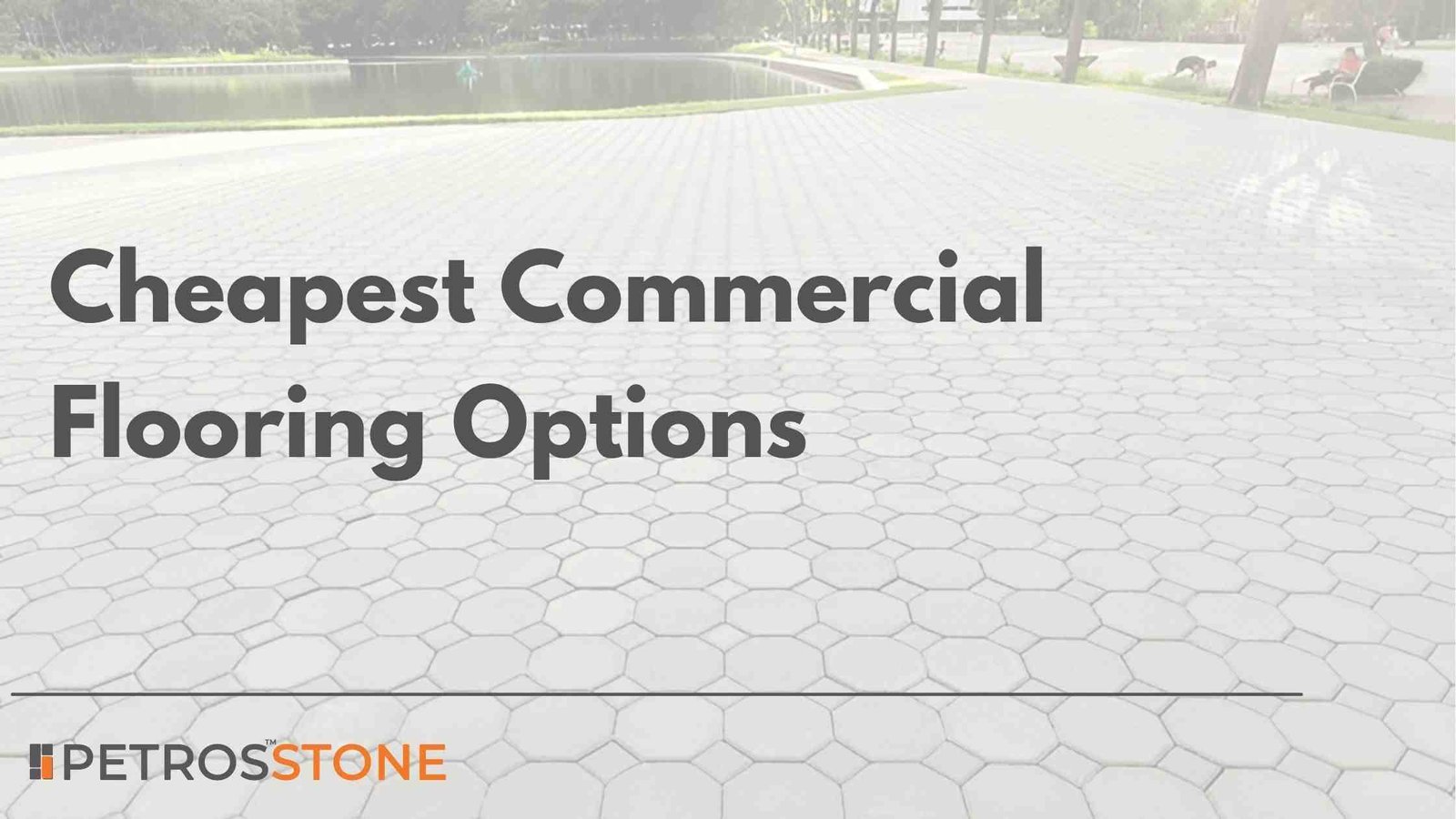
One of the main design and functional factors in a commercial space is flooring. It not only enhances the aesthetics of your building, but it also serves to improve safety, comfort, and reduce long-term maintenance costs. Flooring must be able to withstand a high volume of traffic in a retail shop, office, warehouse, or hospitality business, while also resisting wear and tear and maintaining its appearance.
In this article, we will discuss key factors to consider when choosing commercial flooring that is both cost-effective and low-maintenance, helping you get the best value from your investment.
Vinyl flooring at USD 1 – USD 5 per sq. ft. is the most budget-friendly. Double-charged vitrified tiles offer affordable durability at USD 2.5 – USD 7 per sq.ft, Limestone flooring sits in the mid-range at USD 4 – USD 10 per sq.ft, while Granite flooring is the most premium option, ranging from USD 4 – USD 12 per sq.ft. For lucrative deals, you can directly buy from the manufacturer.
Here’s a list of cheapest and low-maintenance flooring options:
- Vinyl Flooring
- Laminate Flooring
- Polished Concrete
- Carpet Tiles
- Rubber Flooring
- Linoleum Flooring
- Ceramic Tile
- Granite Flooring
- Double-Charged Vitrified
- Limestone Flooring
Factors to Consider When Choosing Commercial Flooring
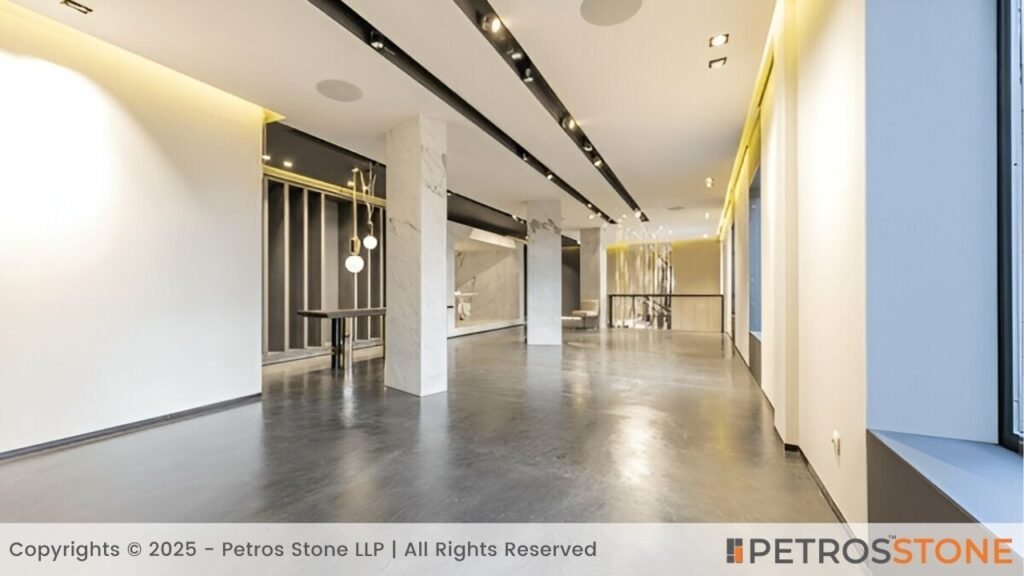
Budget Constraints
A flooring budget will include funds for both material and installation costs. Other materials may be cheap to purchase, yet they may still need professional setup, which might increase the overall cost. A case in point is the use of ceramic tiles; the material cost is low on a per-square-foot basis, yet the tiles will be costly depending on labour.
Hint: When you are seeking quotes, it is always good to involve multiple suppliers and installers to compare the total costs.
Maintenance Requirements
In the case of a highly dynamic commercial space, cleaning time is directly proportional to productivity. Resistance floors like vinyl floors or polished concrete are easy to maintain; you do not need special cleanings, thus, use reduces your overall maintenance costs.
Durability & Traffic Levels
High-traffic areas demand hard floors. Carpet can be comfy but harder to maintain, especially in a beverage-heavy cafe, than rubber flooring or laminate. Finding the durability of the flooring to match the traffic level helps to avoid the replacement of the flooring prior to the expected period.
Safety and Slip Resistance
Flooring that does not allow slips is necessary in areas like restaurants, fitness centres, and hospitals. The application of materials such as rubber or even textured vinyl provides a stable grip in the working environment to prevent accidents and liability occurrences.
Aesthetic Appeal
You can select flooring that fits your brand image, even on a restricted budget. As an example, wood-look vinyl planks may provide the warm, upscale appearance minus the expense of hardwood.
Top Cheapest Low-Maintenance Commercial Flooring Options
Vinyl Flooring
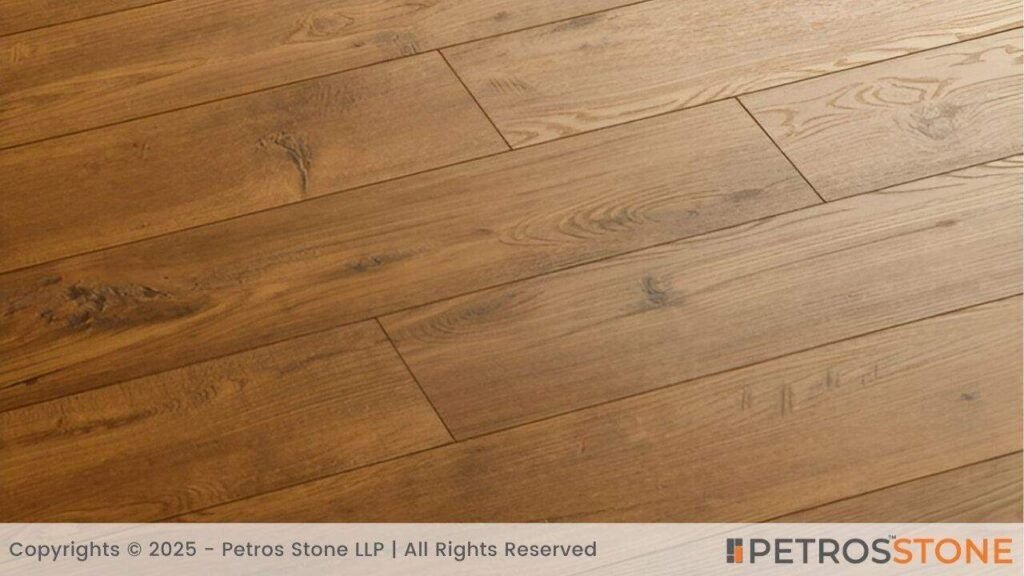
Vinyl is also very popular with businesses due to its low costs, flexibility, and maintenance-free nature. It comes as a sheet, tile, or planks and can look like wood, stone, or ceramic.
Ideal for: Retail shops, clinics, offices, and restaurants.
Maintenance: Mop with mild cleansers once a week and sweep daily.
Pros
- Water and stain-resistant
- Great diversity of forms
- Comfortable underfoot
Cons
- Prone to scratches from heavy furniture
- Prefers a smooth subfloor to give optimal installation performance
Laminate Flooring
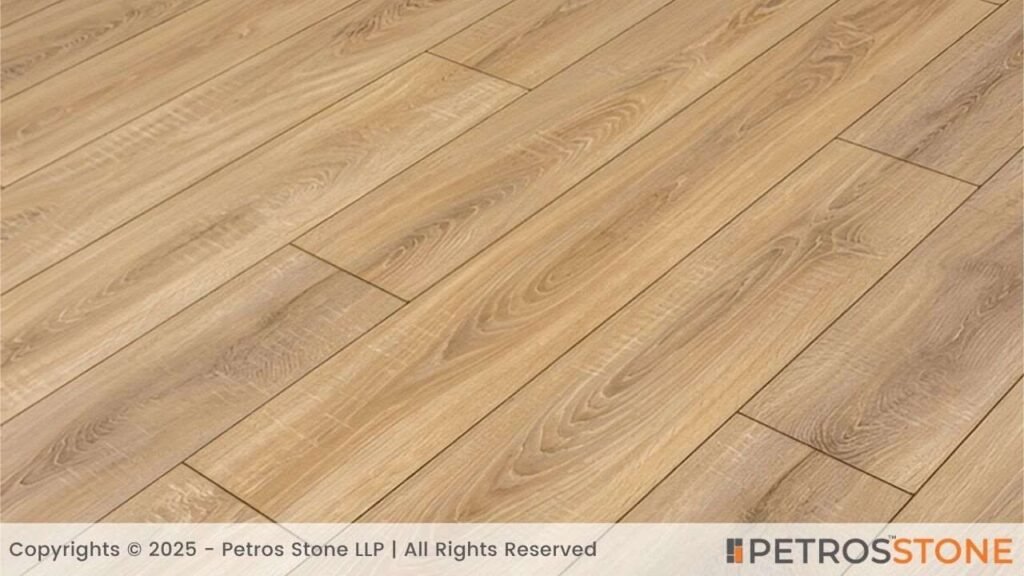
Laminate gives a visual of either hardwood or stone at a much lower expense. It is perfect to be used in offices and light commercial settings as its wear layer prevents scratches and stains.
Ideal For: Offices, showrooms, small boutiques.
Maintenance: Dry mop or vacuum frequently; clean up spills immediately.
Pros
- Less expensive than hardwood
- Non-fading; non-scratchy
- Simple to fix using click-lock applications
Cons
- Wraps with exposure to water
- Slick with no patterned surface
Polished Concrete
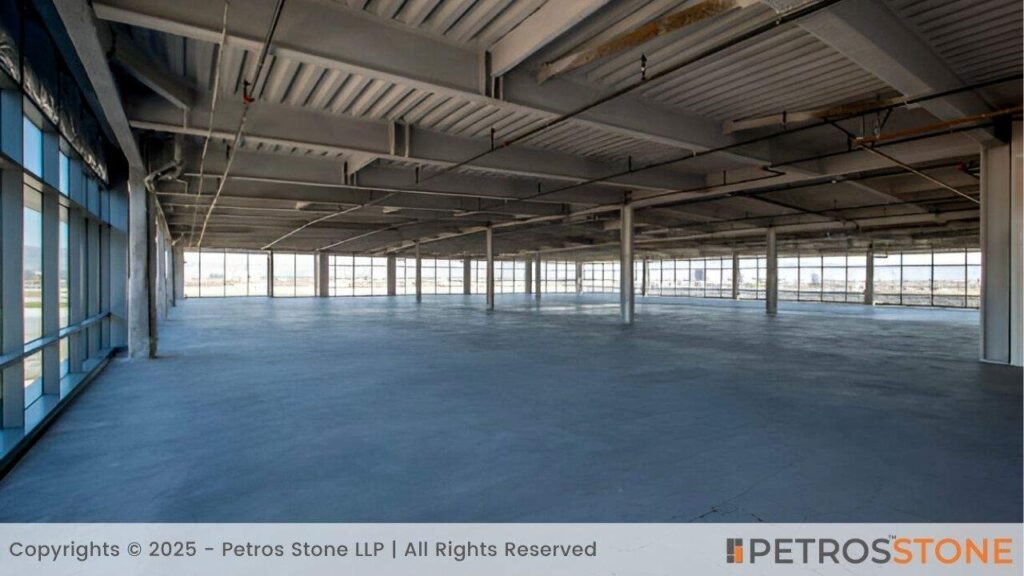
Polished concrete is highly durable, solid, and modern. It is particularly trendy in industrial, retail, and minimalist style environments.
Ideal For: Warehouses, showrooms, and industrial kitchens.
Maintenance: Mopping occasionally; should be resealed every few years.
Pros
- Low lifetime cost
- Impervious to chemicals and heavy objects
- Modern yet minimalistic appearance
Cons
- It may not be very comfortable to stand on a rigid surface for long hours.
- Cold in winter unless heated
Carpet Tiles
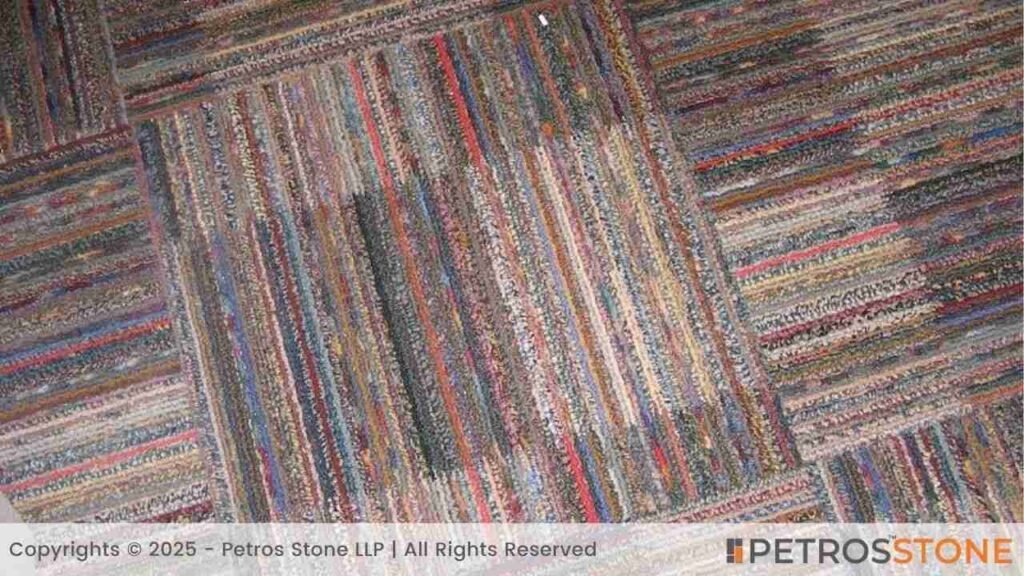
Carpet tiles create a sense of softness, calm, and silence. They can be easily replaced in case they break, and are quite practical in medium-traffic areas.
Ideal For: Office, conference rooms, libraries.
Maintenance: Vacuum regularly; clean stains on a spot basis.
Pros
- Replaceable individual tiles
- Smooth and soundproofed
- Diversity of hues and patterns
Cons
- Not suitable for wet areas
- will stain unless a protective film is applied
Rubber Flooring
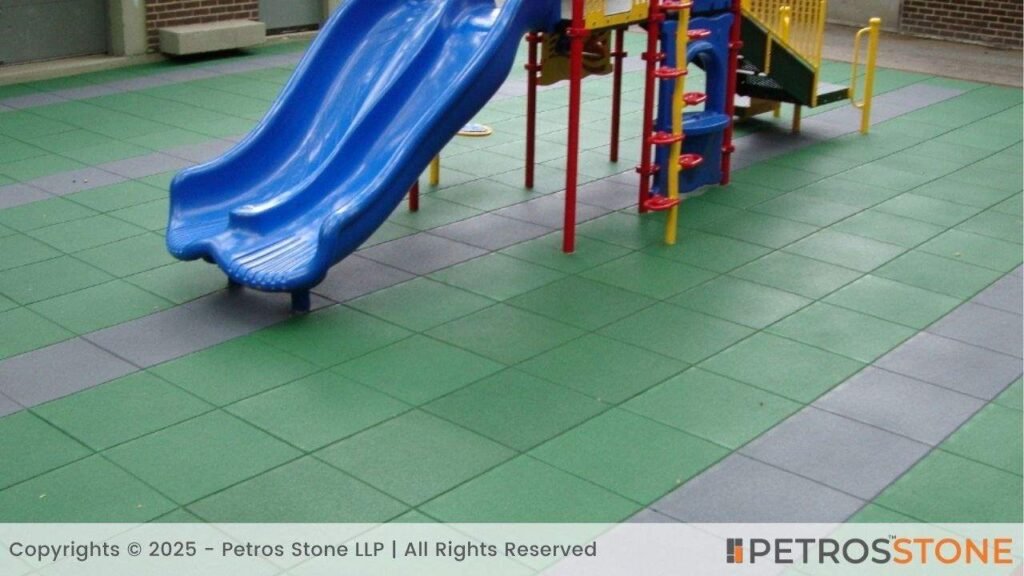
Rubber flooring is distinguished as shock-absorbing, slip-resistant, and durable. It is prevalent in gyms, hospitals, and schools.
Ideal For: Gyms, hospitals, and childcare.
Maintenance: Simple sweeping and damp mopping.
Pros
- Excellent traction
- Reduces noise
- Impact-resistant and waterproof
Cons
- Unavailability of wide choices like vinyl or tile design
- May have an initial odour
Linoleum Flooring
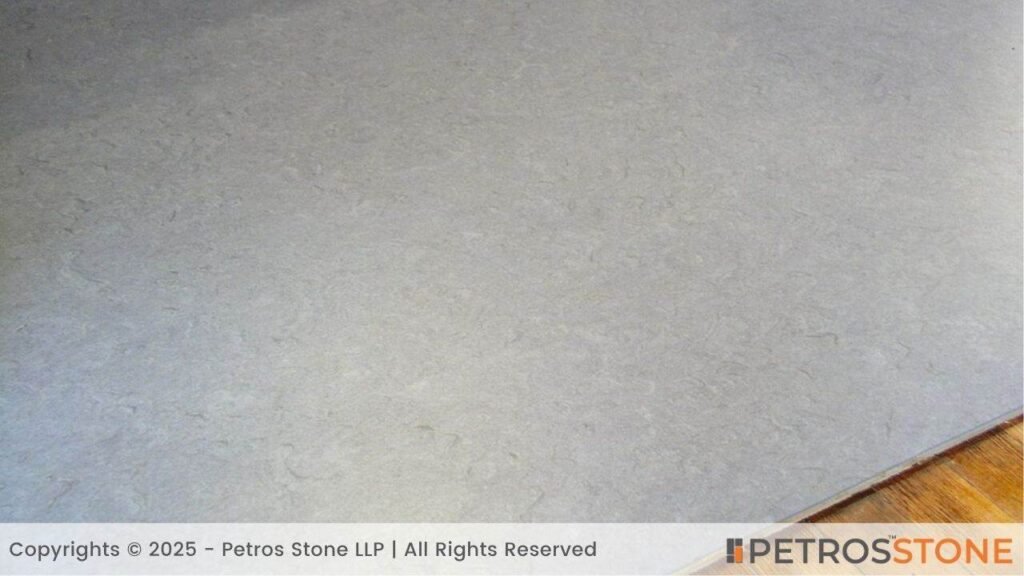
Linoleum is a naturally friendly flooring substance, made of renewable natural resources like cork and linseed oil. It will last long when adequately sealed.
Ideal For: Environmentally-friendly offices, schools, and health care facilities.
Maintenance: Sweep and mop occasionally; resealing after a few years.
Pros
- Sustainable and biodegradable
- Scratch and stain-resistant
- High life expectancy (20+ years)
Cons
- Discolours with sunlight
- Needs moisture protection by sealing
Ceramic Tile Flooring

Ceramic tiles are non-porous, timeless, and easy to clean, and thus apply to wet areas.
Ideal For: Bathroom counters, kitchen counters, and cafes.
Maintenance: Sweep and mop; clean grout occasionally.
Pros
- Highly durable
- Variation in style and finish
- Water and stain-resistant
Cons
- Cold and hard underfoot
- May break when something heavy falls on them
Granite Flooring
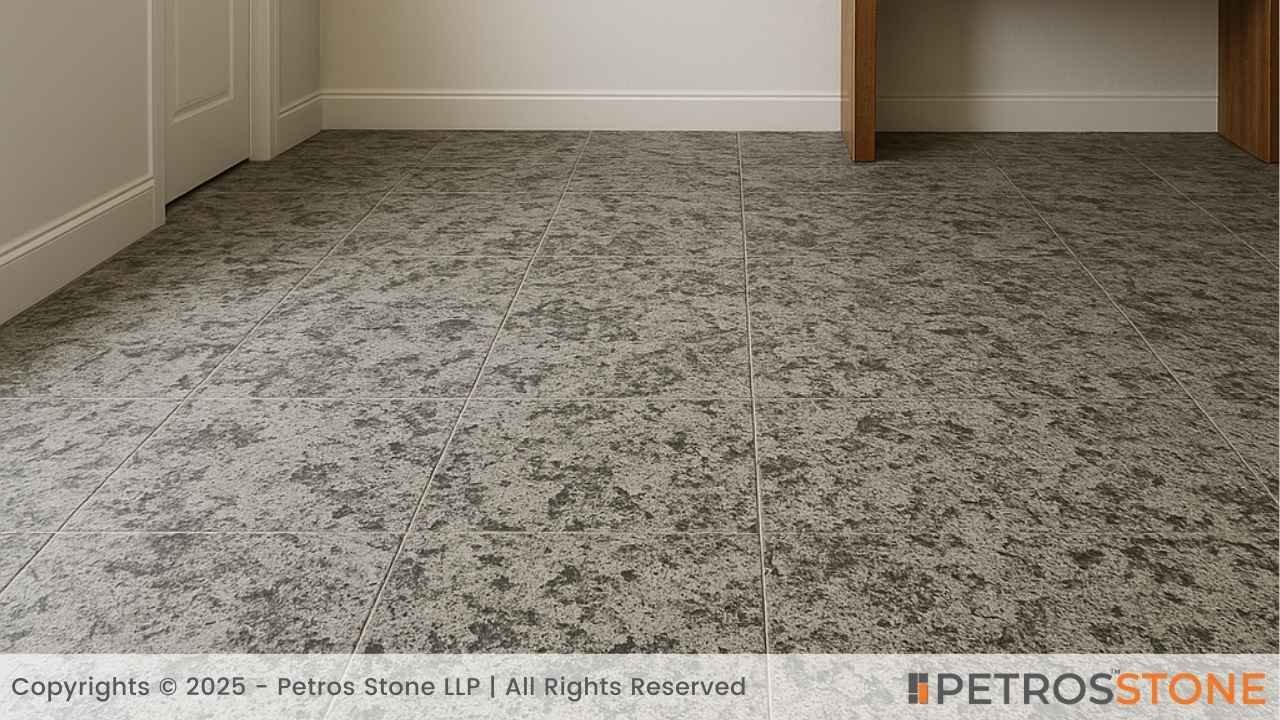
Granite Flooring is a premium natural stone option known for its durability, scratch resistance, and timeless elegance.
Ideal for: Banks, malls, hotel lobbies
Maintenance: Simple mopping; seal every few years
Pros
- Extremely durable
- Scratch & heat resistant
- Elegant
Cons
- Higher upfront cost
- Heavy installation
Double-Charged Vitrified Tiles
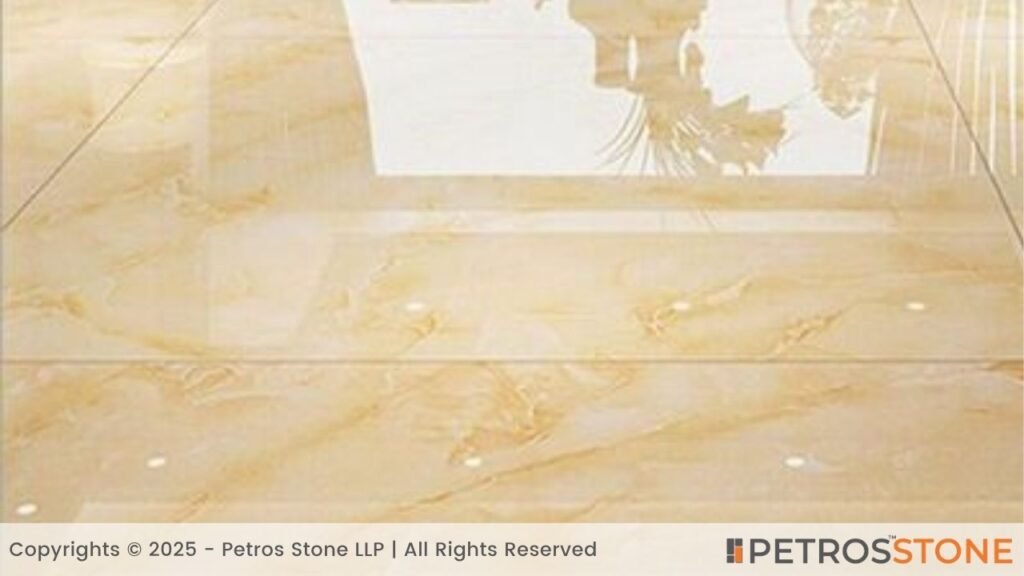
Double-Charged Vitrified Tiles are engineered tiles designed for durability and cost-efficiency, making them suitable for busy commercial environments
Ideal for: Offices, retail chains, showrooms
Maintenance: Daily sweep, occasional mop
Pros
- High wear resistance
- Affordable,
- Glossy finish
Cons
- Limited patterns
- Can crack under impact
Limestone Flooring
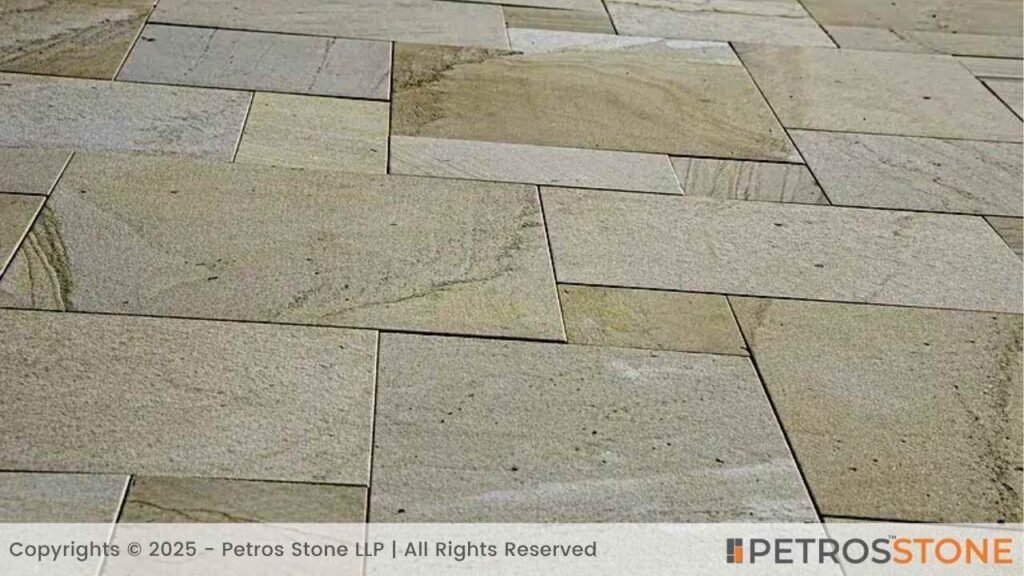
Limestone Flooring offers a soft, earthy charm with a natural feel, perfect for heritage-inspired interiors and boutique hotels.
Ideal for: Heritage-themed spaces, boutique hotels
Maintenance: Sweep, damp mop, and reseal periodically
Pros
- Natural
- Elegant
- Comfortable underfoot
Cons
- Porous
- Needs sealing
- Scratches easily
Cost Comparison Table
| Flooring Type | Material Cost (USD/sq ft.) | Installed Cost (USD/sq. ft.) | Maintenance Level | Durability |
| Vinyl Flooring | 1 – 3 | 2 – 5 | Low | High |
| Laminate Flooring | 1.5 – 3.5 | 3 – 6 | Low | Medium |
| Polished Concrete | 2 – 4 | 3 – 8 | Very Low | Very High |
| Carpet Tiles | 2 – 4 | 3 – 6 | Medium | Medium |
| Rubber Flooring | 3 – 6 | 4 – 9 | Low | High |
| Linoleum Flooring | 2 – 5 | 3 – 7 | Low | High |
| Ceramic Tile | 2 – 5 | 5 – 10 | Low | High |
| Granite Flooring | 4 – 10 | 6 – 12 | Low | Very High |
| Double-Charged Vitrified | 2.5 – 4.5 | 4 – 7 | Very Low | High |
| Limestone Flooring | 4 – 8 | 6 – 10 | Medium | Medium |
Tips to Save Money on Commercial Flooring Installation
Choose Off-Season Installation
- Late fall or winter has fewer projects by contractors.
- During these months, you can be allowed discounts on labour and materials.
- Early booking will give you the highest rates and availability from operators.
Buy in Bulk
- Considerable amounts are usually eligible for a wholesale or bulk price.
- Assists you in maintaining colour and pattern cohesion throughout your area.
- Eliminates numerous buying and unnecessary delivery expenses.
Use Local Suppliers
- Saves transportation or shipping costs.
- The quality of the material is easier to check before making the purchase.
- Sales, discounts or other special offers may be provided to local businesses.
Consider DIY for Small Spaces
- It is suitable in spaces less than 300 sq ft, such as in small offices or in storerooms.
- Click-and-lock vinyl or laminate is easy enough to install.
- Prevents loss of labour and provides you with control over the project schedule.
Maintenance Tips to Prolong Flooring Life
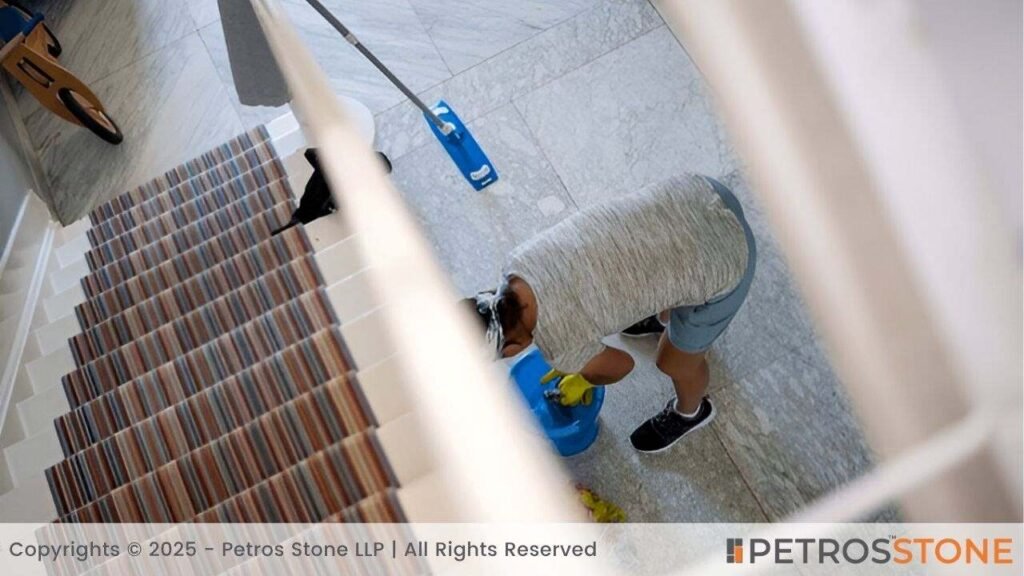
Regular Cleaning Schedules
- Clean by type of flooring (i.e. dry mop laminate floor, wet mop vinyl).
- Clean deep once a month at least to get rid of invisible clutter.
- Train and educate cleaning staff on how to use chemicals that would not damage surfaces.
Immediate Spill Cleanup
- Keep protections against spillage, such as absorbent cloths or paper towels.
- Clean stains with mild chemicals since harsh chemicals will ruin the surface.
- In the case of carpets, blotting is essential as opposed to rubbing, which causes the fibres to break.
Use Floor Mats in High-Traffic Areas
- Position them at the entrance, exit points, and near the workstations.
- Choose anti-slippery mats.
- Clean mats regularly to get maximum effectiveness.
Apply Protective Sealants
- Sealants need to be replenished every 3 years, depending on traffic conditions.
- Apply sealants that are particular to your floor (concrete, linoleum, etc.).
- Before sealant application, floors should be clean and dry.
Rotate Carpet Tiles
- Change low-traffic to high-traffic tiles every 6-12 months.
- Use a numeration system to help track rotation.
- Check tiled surfaces that may be rotated to detect wear or cracks.
Table: Recommended Cleaning Frequencies by Flooring Type
| Flooring Type | Material Cost (USD/sq. ft.) | Installed Cost (USD/sq. ft.) | Maintenance Level | Durability |
| Vinyl Flooring | 1 – 3 | 2 – 5 | Low | High |
| Laminate Flooring | 1.5 – 3.5 | 3 – 6 | Low | Medium |
| Polished Concrete | 2 – 4 | 3 – 8 | Very Low | Very High |
| Carpet Tiles | 2 – 4 | 3 – 6 | Medium | Medium |
| Rubber Flooring | 3 – 6 | 4 – 9 | Low | High |
| Linoleum Flooring | 2 – 5 | 3 – 7 | Low | High |
| Ceramic Tile | 2 – 5 | 5 – 10 | Low | High |
| Granite Flooring | 4 – 10 | 6 – 12 | Low | Very High |
| Double-Charged Vitrified | 2.5 – 4.5 | 4 – 7 | Very Low | High |
| Limestone Flooring | 4 – 8 | 6 – 10 | Medium | Medium |
Summary
Understanding the right commercial flooring takes a balance between cost, durability, maintenance, and looks. Each of the following: vinyl, laminate, polished concrete, carpet tiles, rubber, linoleum, and ceramic tiles, has its advantages, and your preferred type of business, financial resources will dictate the deciding factor.
Key Takeaways
- Don’t think only about the initial cost; pay attention to the repair and replacement costs.
- Vinyl and laminate are cheap and applicable in most business environments.
- Polished concrete provides the best long-term maintenance prices.
- Flooring made of rubber is preferable in terms of safety and slip resistance.
- Installation can be done in off-peak seasons to save on costs.
- Proper cleaning and sealing will lengthen the life of the floors by years.
Feel free to get in touch for a free consultation, quote, and get a detailed understanding from our experts here at Petros®. Visit https://petrosstone.com/ or call +91-8446360361 and WhatsApp

Hello!
I’m Dr Mridali, a content writer with a background in dentistry and a passion for turning complex topics into clear, engaging stories. From healthcare to architecture, I create blogs that inform, educate, and connect with readers. With every piece, I aim to blend accuracy with creativity to make information truly valuable.
Brown Granite
White Galaxy Granite
Blue Bahia Granite
Silver Cloud Granite
Black Pearl Granite
Dallas White Granite


